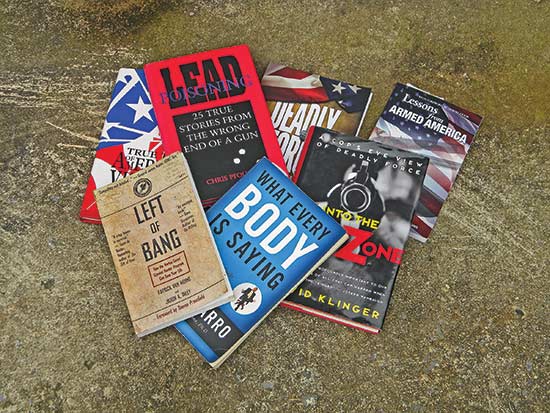Read A Book
The best way to get acquainted with violence — before it happens — is research, and books are my favorite way. True Tales Of American Violence, and Lead Poisoning, 25 True Stories From The Wrong End Of A Gun, by Chris Pfouts are two good ones. Lessons from Armed America, by Mark Walters and Kathy Jackson is another good source. To get an idea of what law-enforcement officers face I recommend David Klinger’s book Into The Kill Zone. The stories in these books come from a variety of people who willingly and unwillingly were involved in violent attacks.
Be careful when using the ’net. Personally, I don’t read “war stories.” Whenever something starts with “A friend of mine,” or “I heard,” disregard it immediately. You’re looking for facts, such as videos of assaults or reviews of these incidents by actual experts, like the Ayoob Files in Handgunner. You’re looking for vetted, trustworthy info. Watch a violent attack, over and over, closely observing body language. That’s part of your research.
Over 90 percent of human communication is non-verbal. A person’s body language tells you what they’re thinking, as opposed to what they’re saying. What Every Body Is Saying by Joe Navarro isn’t a tactical book, but you’ll learn some surprising facts. The most expressive part of the body is the feet. The feet tell you what someone is thinking, usually before they’re even consciously aware of their own thoughts or decisions.
Left Of Bang by Van Horne and Riley is based on the Marine Corps’ Combat Hunter Program, and teaches you how to read individuals and large groups. Knowing the warning signs allows you to avoid and escape a dangerous situation — or prepare to defend against an assault.






